Cannabis
Does Cannabis Interact With Pharmaceutical Medications?
Published
2 years agoon
By
admin
All chemical compounds interact with other chemicals in a unique manner. This includes over-the-counter drugs and prescription pharmaceuticals all the way to illicit substances. That’s why it is important to always seek the opinion of a pharmacist before mixing any drugs, and cannabis is no exception.
Cannabis interactions have been identified to be relatively mild in most cases with the interactions being mostly favorable. This however does not mean that one should let their guard down and consume them willy nilly when they are on other medications. While most interactions are positive, others could be negative with adverse effects.
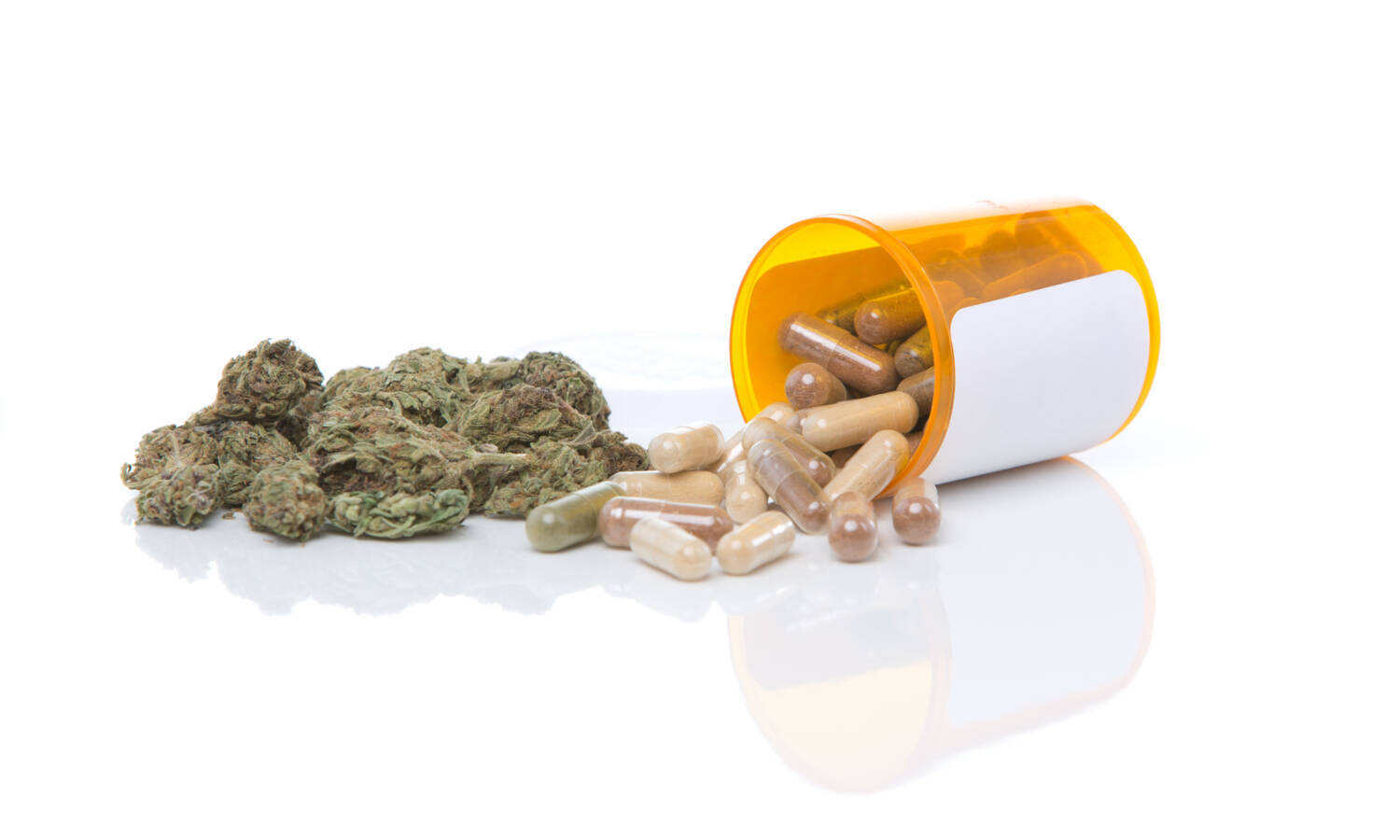
Before we dive into a description of some of the most common drugs people have been known to combine with cannabis, let us first explain the difference between “synergistic” and “additive” effects. When a compound has an additive effect, what this means is that the final effect is the sum of their individual effects (I.e. 1+1=2). Synergistic effects on the other hand are altered and mostly greater than the sum of their individual effects (i.e. 1+1=3).
It is also important to keep in mind that the individual composition of each batch of weed might differ significantly from another, therefore triggering different effects.
To answer the question of whether cannabis interacts with other medicines, the answer is yes! Not only are the cannabinoid levels of the cannabis affected by interacting with other medications and drugs, the cannabinoids themselves can influence medication concentrations too.
Here are some ways in which this interaction happens:
Pharmacodynamic interactions: Cannabis can interfere with the way a drug is designed to interact with its target receptors. This interference could either hinder or potentiate the effects of the drug.
Pharmacokinetic interactions: The compounds in cannabis can also change the way in which the drug gets absorbed, metabolized, absorbed by tissue in the body, and excreted. The effect of the cannabis compounds changes the expression of different enzymes which either induces (exhibits higher activity) or inhibits them.
Inhibiting membrane transporters: Cannabis compounds can also have the effect of binding to membrane transporters, thereby inhibiting them.
Effect of drugs on cannabinoid levels: When drugs such as the antifungal ketoconazole are administered, both the levels of THC and CBD shoot up drastically, sometimes to even double the intake. This is because of the inhibitory action ketoconazole has on the enzyme CYP34A. Verapamil and macrolides are other CYP34A inhibitors which would also produce the same effect. Other enzyme inhibitors that affect CYP2C9 are cotrimoxazole, amiodarone, and fluoxetine. This spike not only increases chances of experiencing side effects, it also augments THC’s psychoactive effects.
Effect on cannabinoids on the levels of other drugs: Not only does the presence of some drugs increase cannabinoid levels in the body, the cannabis compounds can also influence the concentration of some medications. For instance, CBD inhibits the action of CYP2C9, which in turn leads to tripling levels in the active metabolite contained in the drug clobazam. THC on the other hand is a CYP1A2 inducer. What this means is that it could theoretically decrease the concentrations of some psychiatric drugs such as haloperidol, olanzapine, and chlorpromazine. CBD is also a potent inhibitor of the enzyme CYP3A4 which is responsible for metabolizing almost a quarter of all drugs.
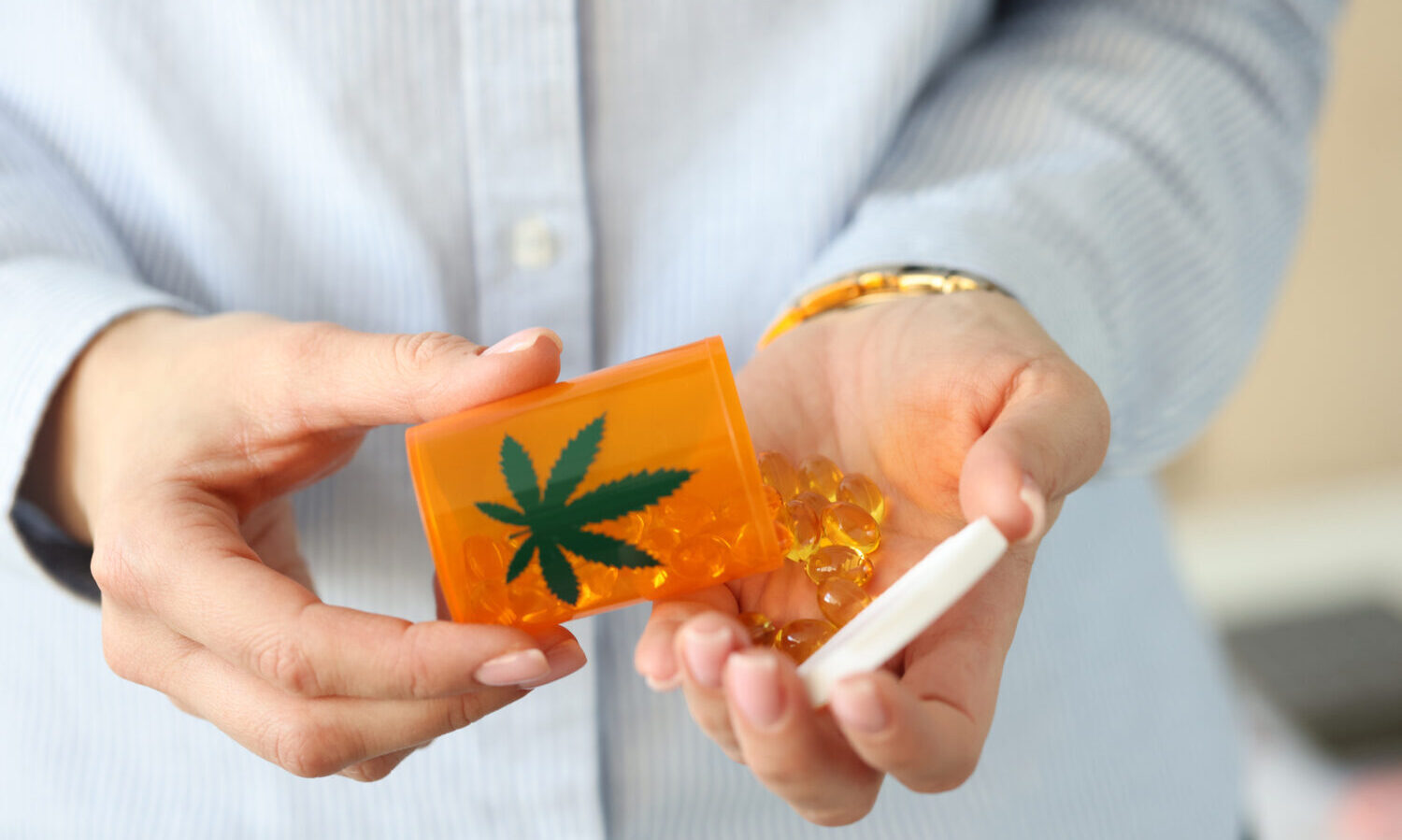
This effect is also observed in the use of marijuana with the anticoagulant drug, warfarin. In this case, INR, the blood clotting parameter goes very high, which results in the potential for markedly more significant bleeding complications. CYP3A4/5 inhibition after the use of cannabis with tacrolimus has indicated an almost three-fold spike in the tacrolimus levels.
Marijuana inhalation and drug clearance: Marijuana that is smoked accelerates the removal by over 40% of bronchodilators such as theophylline from the body. This is as a result of enhanced CYP1A2 activity. This effect can also be seen in individuals who indulge in smoking more than a couple of joints a week when taking drugs like olanzapine and clozapine. In this instance, smoking marijuana leads to reduced efficacy of the drug.
RELATED: Drugs You Don’t Want To Mix With Marijuana
Marijuana’s additive effects: As we mentioned earlier, marijuana can have additive effects when used with some drugs. For instance, marijuana combined with drugs that stimulate or mimic sympathetic activity, like amphetamines, may cause the patient to experience either symptomatic or even hazardous tachycardia or hypertension. Cannabis used with drugs which inhibit the central nervous system such as opioid drugs or alcohol could depress the central nervous system even more, leading to sleepiness, drowsiness, and ataxia.
When marijuana is used together with drugs which inhibit cholinergic receptors, the tachycardia and confusion which occur with the use of these drugs may worsen.
Marijuana and sedatives: The effect of marijuana on sedatives is also an additive one. Many sedatives like alcohol, benzodiazepines (Valium, Ativan, etc.), as well as some antidepressants and barbiturates like phenobarbital, and narcotics like codeine–influence the GABA neurotransmitters found in the central nervous system, which produces a calming effect. Likewise, cannabinoids (and even terpenes such as myrcene), also have their own sedative effects, depending on strain and concentrations of cannabinoids.
When such cannabinoids are combined with sedatives, an additive effect is created. While it does not have a synergistic effect like say mixing sedatives and alcohol, cannabis does add to the effect and should therefore be used in combination judiciously.
RELATED: Is It Safe To Use Cannabis With ADHD Medications?
CBD and cytochrome P450: We have already discussed the action of cannabis on some enzymes. Of all the enzymes marijuana affects, its effect on Cytochrome P450 might just be the most prominent yet. P450 is a class of enzymes considered to be essential which play a vital role in drug interactions. Although evidence strongly suggests that CBD is well-tolerated, generally safe, and non-addictive (anti-addictive even), it has been known to interact synergistically (adversely or beneficially) with other medications in some patients. How so?
Most notably is the interplay between cytochrome P450 and CBD in the use of anti-seizure, and epilepsy medications. A small study that was published in 2015 found the intake of CBD elevated the blood concentrations of clobazam (which is an anticonvulsant), in children, at the same time elevating norclobazam (which is an “active metabolite of clobazam”).
The good news here is that the remedy seems to be fairly straightforward: the introduction of CBD can lead to the reduction of the dosage of clobazam, which is beneficial in reducing side effects. The benefits of these combinations even extended to a reduction in seizures, with 9 out of the 13 participants experiencing a 50%+ reduction in seizures. The researchers therefore concluded that “CBD used in combination with clobazam, is a safe and effective treatment of refractory epilepsy.”
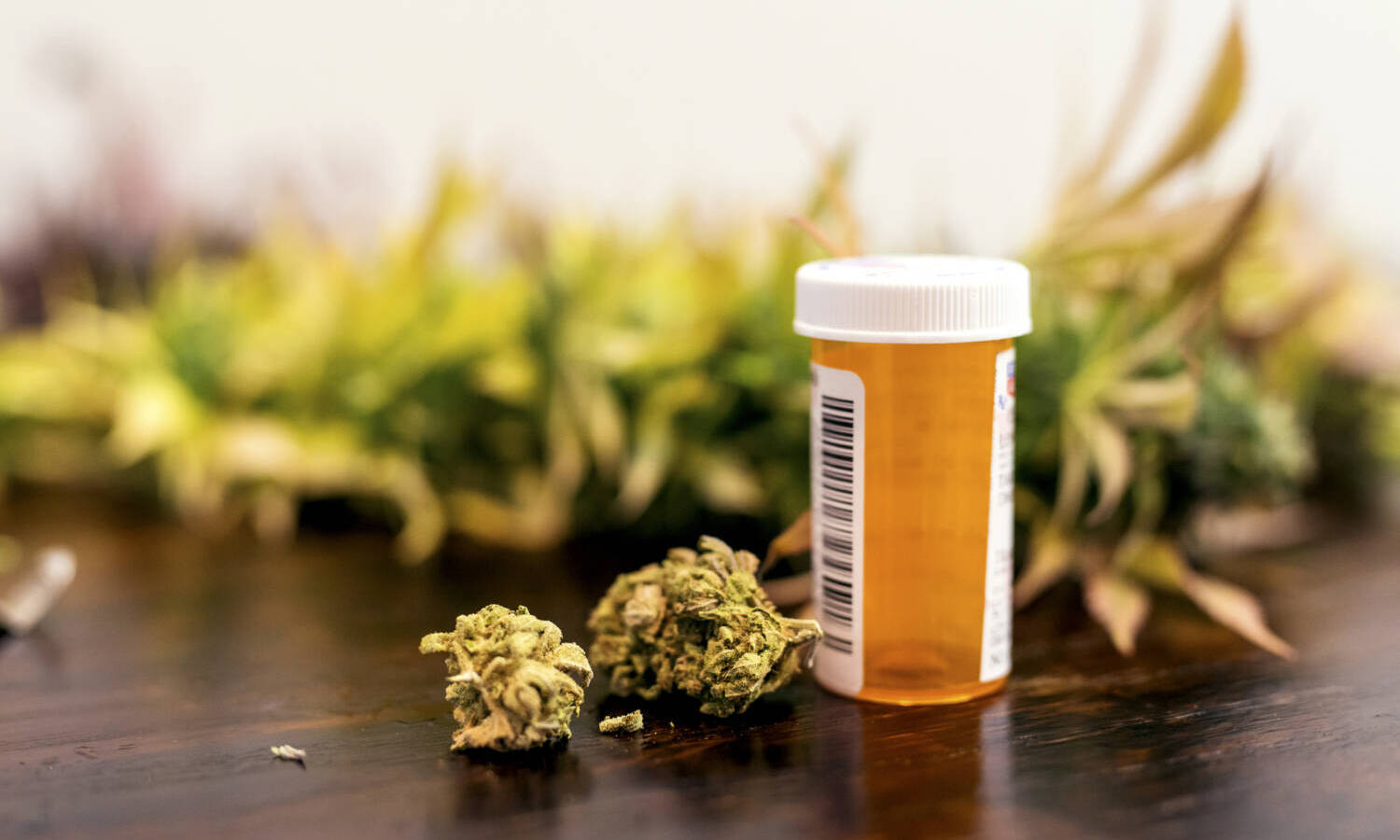
How Does THC Interact With Other Medications?
One of THC’s major properties is that it interacts with both CB1, and CB2 cannabinoid receptors simultaneously. This induces a “cardiovascular stress response” which can raise cardiac oxygen consumption, and at the same time reduce blood flow into the coronary arteries. Though reports of adverse effects are relatively rare, if patients are on blood pressure medication, they should be aware of the compound effects cannabis may have.
As we have seen with CBD, THC could also increase the effect of blood thinning drugs (e.g. warfarin or heparin), or those which are known to carry their own risk of blood thinning such as ibuprofen, and naproxen, etc. This could happen by cannabis slowing down the metabolism of the drugs or to a lesser extent, THC could displace the warfarin from protein binding sites.
Using CBD Safely While Taking Other Medications
CBD has several therapeutic benefits that are being revealed by science. The fact that it has a very wide safety profile has made many people erroneously believe that there’s totally no risk in mixing CBD with pharmaceuticals.
If you are thinking about trying CBD as an “add-on therapy” to ease the symptoms of a medical condition, here are a couple of considerations to have in mind:
- First talk to your doctor about your decision. They might be to determine a schedule, CBD product, and dosage that would be appropriate for your medications. In some cases, your doctor may choose to monitor your blood plasma levels depending on the medications you are taking.
- Don’t stop any medications you are taking for substitution with CBD unless your doctor says that it is expressly okay to do so.
- Topical CBD solutions such as creams, lotions, and salves can be an option. Unlike edibles, vaping solutions, and oils, topicals typically do not get into your bloodstream and would therefore react less. This is especially true for topicals that are not intended to be a transdermal solution.
- Look out for the grapefruit warning: Even though studies are still being done to determine the potential interactions between specific medications and CBD, it is a general rule of thumb to avoid CBD if your medications contain a grapefruit warning on their label. If you are taking CBD, you should avoid medications that have a grapefruit warning because chemicals found in grapefruit called furanocoumarins inhibit CYP3A4, much in the same way that CBD does. The result of this inhibition is slowed metabolization of medications.
Some of the medications that commonly have a grapefruit warning are:
- Antibiotics and antimicrobials
- Anticancer medications
- Antihistamines
- Antiepileptic drugs (AEDs)
- Blood pressure medications
- Blood thinners
- Cholesterol medications
- Corticosteroids
- Erectile dysfunction medications
- GI medications, like some used to treat nausea or GERD
- Heart rhythm medications
- Immunosuppressants
- Mood medications, used to treat depression, anxiety, or mood disorders
- Pain medications
- Prostate medications
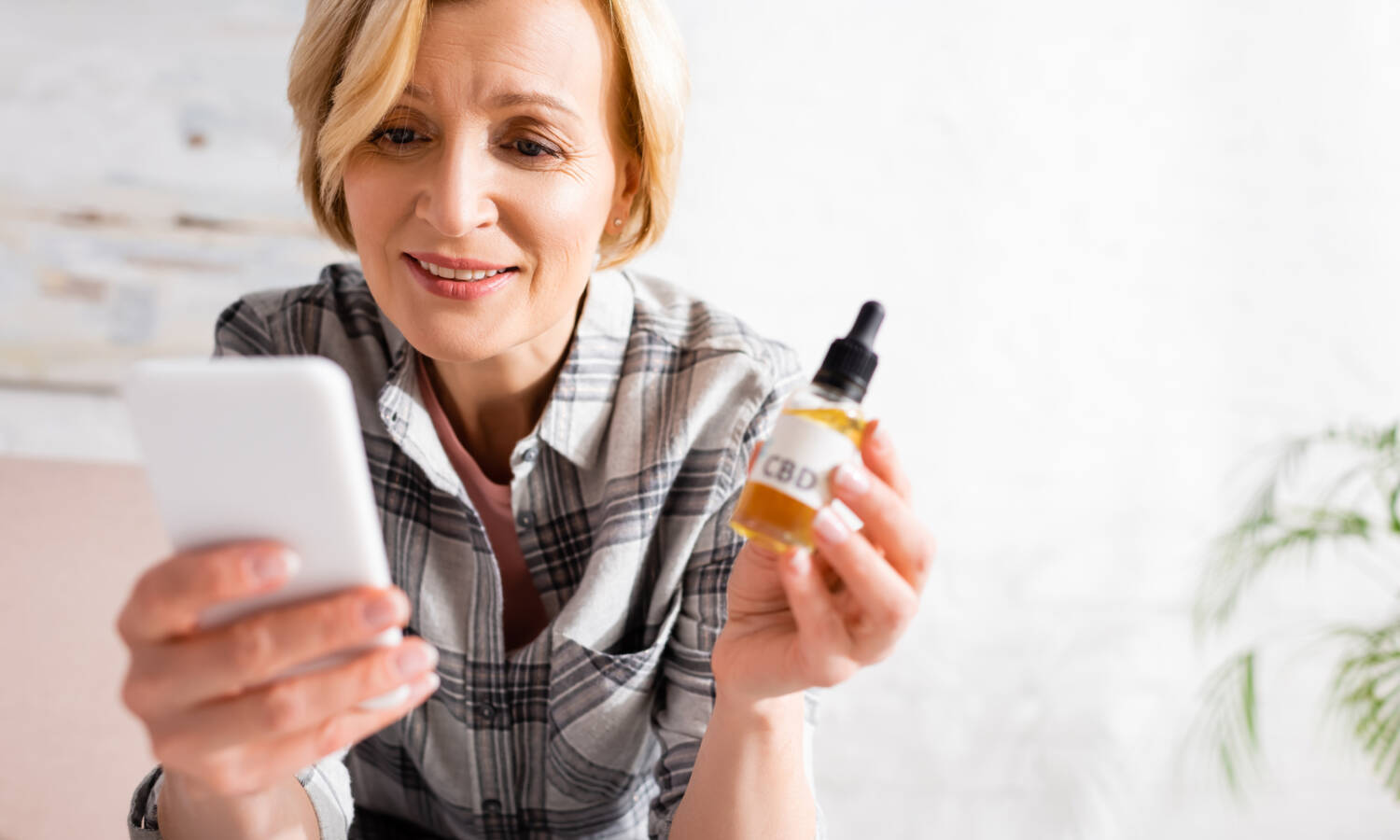
Safety and Side Effects
If you have started taking CBD alongside your medications, always remember to look out for changes in how either the CBD or medication affect you. Some side-effects you could watch out for are:
- Drowsiness
- Sedation
- Nausea
- Decrease in the effectiveness of the medication like breakthrough seizures
- Fatigue
- Diarrhea
- Changes in appetite
- Changes in weight
How Does Cannabis Interact With Thyroid Medications?
Hashimoto’s thyroiditis, which is also called autoimmune or “chronic lymphocytic thyroiditis”, is the most commonly occurring form of thyroiditis. CBD oil has been known to have positive effects in this condition due to its anti-inflammatory properties as well as its ability to be an immunosuppressant.
However, when thyroid medication and CBD oil are taken together, they tend to have an interaction as they are both competing for metabolism. Remember the cytochrome P450 pathways? This competition would lead to hyperthyroidism as thyroxine would end up accumulating in the body before it has a chance to metabolize it. Taking thyroid medication and CBD oil too close together could also lead to mild nausea, as well as anxiety in some patients.
RELATED: The Most Expensive Weed You Can Buy (And How To Make Your Own At Home!)
Interestingly, if a few hours are allotted between the time the thyroid medication is taken and the time the CBD oil is taken, the effects seem to be less common. This could indicate that the two treatments can be taken by the same person as they have different benefits, only not at the same time.
Having said this, it is important to remember that there are not many conclusive studies on the subject and therefore it would be wise to tread with a bit of caution.
Should You Take Paracetamol When Stoned?
Absolutely yes! Though the paracetamol might potentiate the effects of the cannabis, it certainly is not harmful. If you feel that you need to take some painkillers before you smoke your weed, you could do so. Take a few tokes and wait a little to observe the effects. If you seem to be tolerating it well, you can go ahead and finish the whole joint.
Conclusion
For most patients, CBD and cannabis are relatively safe. Nonetheless, cannabis happens to be a complex plant that comprises numerous compounds ranging from cannabinoids to terpenes. Influenced by these vast cannabinoid and terpene profiles, potential interactions with different drugs could be both good and bad and vary significantly from strain to strain.
In this regard, though some general conclusions can be made, drawing broad hypotheses to describe how cannabis will interact with cannabis can be inevitably misleading.
This article originally appeared on MyCannabis.com and has been reposted with permission.
You may like
Cannabis
Mixed Messages From The Feds About Cannabis
Published
3 days agoon
March 28, 2025By
admin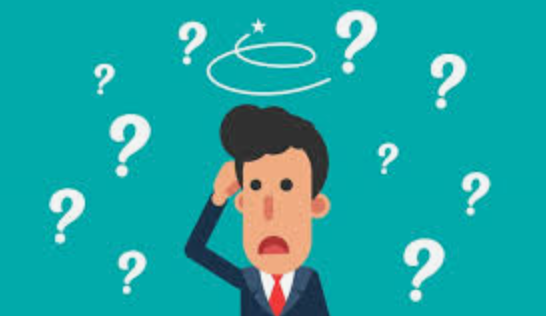
The federal administration is all over the board around fed cannabis policy…and millions of patients are worried.
The industry employees over 440,000 workers at all lives and is driven in a large part by mom and pop businesses. Millions use medical marijuana for health issues ranging from chronic pain to sleep. But there are mixed messages from the feds about cannabis, and people are very worried. The federal government’s stance on marijuana has become increasingly complex, as recent developments show conflicting approaches to the drug’s potential benefits and risks. On one hand, there’s a push for research into medical marijuana for veterans, while on the other, a campaign against cannabis use is being launched.
RELATED: Music Is A Turn On Like Sex And Marijuana
The juxtaposition of initiatives highlights the federal government’s inconsistent approach to marijuana policy. While some departments are exploring the potential benefits of cannabis, others are actively working to discourage its use. This dichotomy is further exemplified by ongoing legislative efforts. For instance, Rep. Brian Mast (R-FL) has reintroduced the Veterans Equal Access Act, which would allow VA doctors to recommend medical marijuana to patients in states where it’s legal. Meanwhile, documents from an ongoing lawsuit suggest that the DEA may have weighted the marijuana rescheduling process to ensure rejection of moving the drug from Schedule 1 to Schedule 3.
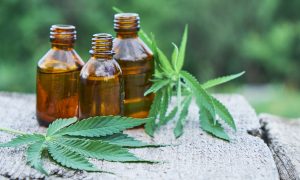
The Department of Defense (DOD) has allocated nearly $10 million in funding for research into the therapeutic potential of MDMA for active-duty military members. This initiative, driven by congressional efforts, aims to explore MDMA’s effectiveness in treating conditions such as post-traumatic stress disorder (PTSD) and traumatic brain injury (TBI). Rep. Morgan Luttrell (R-TX) expressed pride in this development, stating that it could be a “game-changer” for service members battling these combat-related injuries.
Additionally, a bipartisan effort in Congress has been pushing for VA research on medical marijuana for PTSD and other conditions affecting veterans. The VA Medicinal Cannabis Research Act, introduced in both the Senate and House, would mandate studies on how cannabis affects the use of addictive medications and impacts various health outcomes for veterans.
RELATED: The Science Behind Why Music Sounds So Much Better When You’re High
In stark contrast to these research initiatives, the Drug Enforcement Administration (DEA) has partnered with an anti-cannabis nonprofit to launch a social media campaign targeting young people. The campaign, set to run ahead of April 20 (4/20), aims to “flood” Instagram with anti-cannabis content. The DEA is offering monetary incentives to students for creating and posting anti-THC videos, with payments ranging from $25 to $50 depending on the type of content produced.
This approach has raised eyebrows, as it seems to contradict the growing acceptance and legalization of marijuana across the United States. Critics argue that such campaigns may be out of touch with current societal trends and scientific understanding of cannabis.

Not everyone has access to marijuana to help them sleep – good news, hemp is available.
RELATED: Mike Johnson And Marijuana
Hemp contains several compounds contributing to better sleep quality. Cannabidiol (CBD), a non-psychoactive component of hemp, has shown potential in promoting relaxation and reducing anxiety, which can often interfere with a good night’s rest. Studies suggest that CBD may help individuals fall asleep faster and experience fewer sleep disturbances throughout the night.
When formulated and used properly, preliminary research and user reports suggest that hemp gummies improve subjective sleep quality. Users of quality hemp sleep gummies report feeling more rested, a better quality of sleep and fewer awakenings in the night. However, clinical research has shown that over consumption of THC negatively impacts the quality of sleep, especially with long term use.
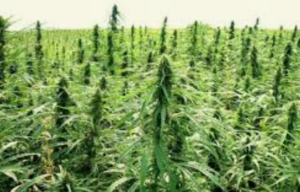
Wana Brands has launched a hemp sleeping product nationally, Mike Hennesy, Vice President of Innovation shared the following about how it works. Naturally hemp-derived sleep gummies contain the same cannabinoids like CBD, CBN, and THC as cannabis or marijuana. These ingredients interact with receptors in the body’s endocannabinoid system, which plays a role in regulating mood, stress, and sleep-wake cycles. For example, CBD may promote relaxation and reduce anxiety, CBN can relieve discomfort and reduce awakenings, while THC can shorten the time it takes to fall asleep, especially at low doses. Together, they may help ease the mind and body into a sleep-ready state.
The best sleep products don’t rely on just one cannabinoid like CBN but instead use a combination of cannabinoids, terpenes, and other sleep-supporting ingredients such as melatonin. This is because the reasons for sleeplessness are multifaceted, and include trouble falling asleep, staying asleep, chronic, pain and anxiety. Each ingredient targets different root causes as well as synergizes with the other cannabinoids and terpenes for the best night sleep.
Longer lasting formulations can actually help reduce awakenings in the night. CBN has been shown in recent research to reduce the number of times you wake up in the night. Combined with other cannabinoids they can synergize to reduce discomfort and anxiety helping consumers stay asleep.
RELATED: Marijuana Use And Guy’s Member
If you do wake up in the middle of the night and can’t fall back asleep products including CBD and CBG to reduce middle of the night anxiety and racing thoughts that can keep us awake, and they have only 1mg of THC so you wake up refreshed and not high in the morning.
For most people, hemp-derived cannabinoids are considered safe and non-intoxicating, with a low risk of dependence. When THC is included in small amounts, it can produce mild effects and can help us fall asleep faster. It generally poses a minimal risk when used in moderation, but there is a potential for dependence if overused, just like with any sleep aid. Adverse events are far more prevalent in pharmaceutical and even over the counter sleep aids than with hemp-derived cannabinoids.
The key is responsible use, including starting with a low dose and taking breaks when needed. If you rely on it every night at high doses, your body may adjust, and it can be habitual. But when used in moderation and with a well-balanced formula, cannabis can be a sustainable part of a healthy sleep routine.
Cannabis
Can Marijuana Help Cholesterol – The Fresh Toast
Published
5 days agoon
March 26, 2025By
admin
Alcohol has some negative side effects, but cannabis could have one positive health benefit – it might help your good cholesterol.
In the late 1980s cholesterol test became come as the impact of it on the body and heart was becoming more evident. Research shows good cholesterol (HDL) helps remove excess cholesterol from the body, while “bad” cholesterol (LDL) can build up in arteries, potentially leading to heart disease. Alcohol and tobacco are known to be rough on the body, but can marijuana help cholesterol?
RELATED: Could Medical Marijuana Help Pope Francis
Marijuana’s potential impact on cholesterol is an emerging area of research, offering both promising insights and areas for further exploration. While studies have yet to reach definitive conclusions, evidence suggests that cannabis may influence cholesterol levels in ways that could benefit cardiovascular health under certain conditions.

Cannabis contains cannabinoids like THC and CBD, which interact with the body’s endocannabinoid system. This system plays a role in regulating various physiological processes, including lipid metabolism. Some studies have indicated that marijuana use might improve cholesterol profiles by increasing high-density lipoprotein (HDL), commonly known as “good cholesterol.” For instance, research published in BMJ Open found that marijuana users had elevated levels of HDL cholesterol, which is associated with better cardiovascular health.
Moreover, cannabis has demonstrated anti-inflammatory properties and the ability to regulate blood glucose levels. These effects can indirectly support heart health by reducing risk factors associated with high cholesterol, such as diabetes and obesity. Additionally, cannabinoids like CBD may help protect the heart from oxidative stress and inflammation, further enhancing cardiovascular health.
RELATED: The Science Behind Why Music Sounds So Much Better When You’re High
Cannabis has also been linked to weight management benefits, which can positively impact cholesterol levels. Studies have shown that marijuana use may reduce abdominal fat and improve metabolic parameters. Since obesity is a major contributor to high LDL cholesterol levels, these findings suggest that cannabis could play a supportive role in maintaining healthy cholesterol levels.
While some studies highlight potential benefits of cannabis for cholesterol and heart health, others caution against its risks. Daily marijuana use has been associated with an increased risk of heart failure and other cardiovascular issues. However, research also indicates that cannabis may reduce the risk of atrial fibrillation and improve outcomes following heart attacks.

Getting THC Edibles in Your Edible Arrangement?

Is Cannabis Legal in California Right Now?

Germany: Trial against operator of Trier cannabis vending machine discontinued

The best energizing THC gummies of 2025 by Leafly

Mixed Messages From The Feds About Cannabis

Humboldt County extends deadline to pay marijuana cultivation taxes

How Hemp Helps You Sleep

420 in Texas is at Reggie & Dro

Daily Cannabis Use Can Help People Get Off Opioids (STUDY)

The Future of Cannabis and Sleep Medicine

Distressed Cannabis Business Takeaways – Canna Law Blog™

United States: Alex Malyshev And Melinda Fellner Discuss The Intersection Of Tax And Cannabis In New Video Series – Part VI: Licensing (Video)

What you Need to Know

Drug Testing for Marijuana – The Joint Blog

NCIA Write About Their Equity Scholarship Program

It has been a wild news week – here’s how CBD and weed can help you relax

Cannabis, alcohol firm SNDL loses CA$372.4 million in 2022

A new April 20 cannabis contest includes a $40,000 purse

Your Go-To Source for Cannabis Logos and Designs

UArizona launches online cannabis compliance online course
Trending
-

 Cannabis News2 years ago
Cannabis News2 years agoDistressed Cannabis Business Takeaways – Canna Law Blog™
-

 One-Hit Wonders2 years ago
One-Hit Wonders2 years agoUnited States: Alex Malyshev And Melinda Fellner Discuss The Intersection Of Tax And Cannabis In New Video Series – Part VI: Licensing (Video)
-

 Cannabis 1012 years ago
Cannabis 1012 years agoWhat you Need to Know
-

 drug testing1 year ago
drug testing1 year agoDrug Testing for Marijuana – The Joint Blog
-

 Education2 years ago
Education2 years agoNCIA Write About Their Equity Scholarship Program
-

 Cannabis2 years ago
Cannabis2 years agoIt has been a wild news week – here’s how CBD and weed can help you relax
-

 Marijuana Business Daily2 years ago
Marijuana Business Daily2 years agoCannabis, alcohol firm SNDL loses CA$372.4 million in 2022
-

 California2 years ago
California2 years agoA new April 20 cannabis contest includes a $40,000 purse



